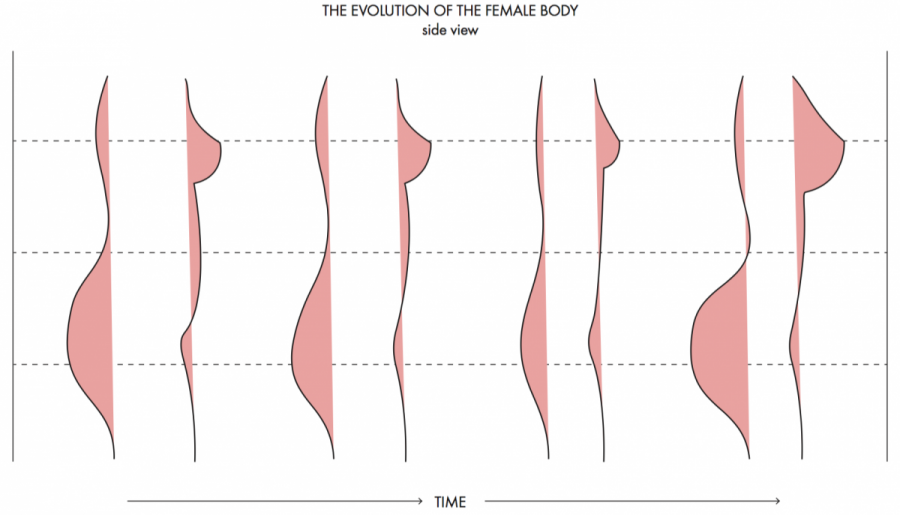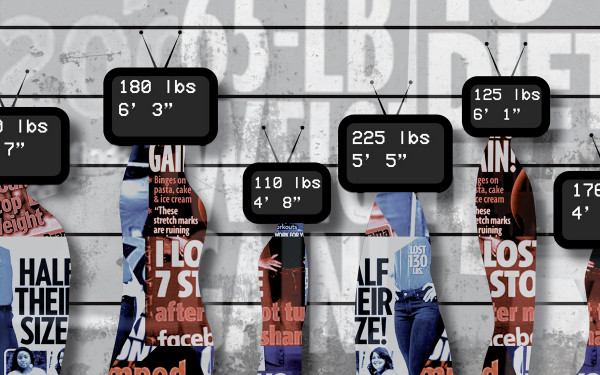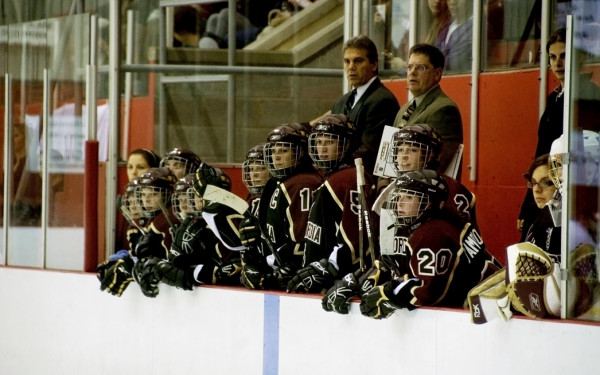The Problem With Today’s “Body Positivity”
Millennial Women Still Face Unrealistic Standards
Millennial women went from “too thick” to “not thick enough” real quick.
Society’s standards of beauty are always changing. Over the past 15 years, the “ideal” body type for women, what is accepted as the “standard” and is represented in our media, has gone from model skinny to “thicc” and curvy. Does this imply that we have moved on to a more healthy and attainable beauty standard for millennial women? Or is this hourglass shape just as unrealistic and unhealthy?
Though our tastes have changed, Canadian women were more likely to be dissatisfied with their appearance than men, according to a 2014 survey by market research company GfK. The survey showed that 1 in 5 women were not satisfied with their appearance`, with 5 percent saying they’re “not at all” satisfied.
Growing up in the 2000’s, I remember desperately wanting to have my hip bones stick out in my slightly cropped tight shirt and low-waist jeans. Paris Hilton and Nicole Richie’s The Simple Life was a reflection of what I and other millennial girls had to compare ourselves to.
And it’s not just celebrities. Since 1959, Mattel’s Barbie doll was the epitome of society’s beauty standards for women; young girls grew up playing with dolls that indicated to them that beauty only comes in size zero to two. Thankfully in 2016, a reflection of this shift in the cultural conversation around women’s appearance, Mattel reinvented the Barbie. She now comes in four different body types (Mattel added sizes tall, petite and curvy), seven skin tones, with 22 diverse eye colours and 23 hairstyles. But this is a new change. The young women of today, like many other generations, did not get to play with Barbie dolls that look just like the “average girl.”
By 2009, body ideals started to slowly shift, and being “stick thin” was no longer as glorified as it used to be. Instead, I began to notice that the naturally skinny girls in my entourage started to develop severe body insecurities. “In high school I was ashamed of how skinny I was, I didn’t like my body at all. I always felt like I had to have a big butt and hips in order to be desirable,” explained Anais Lorena, a 22 year old customer service representative at National Bank.
Having a “big butt” has become so popular that buttock implant surgeries have increased. According to the American Society of Plastic Surgeons there was a 28 per cent increase in buttock augmentations between 2014 and 2015.
The issue with this new ideal female body is that women feel pressure to obtain an hourglass figure that in practice turns out to be just as hard to achieve as a stick-thin appearance.
Take Kylie Jenner as an example. Even though there is no evidence to prove that Jenner’s body was sculpted by plastic surgery, Dr. Andrea Giannitrapani, a plastic surgeon, has analyzed her body growth throughout the years and speculates that she has probably had surgery work done. Girls are encouraged to think of Jenner as the epitome of the current beauty trend, but realistically, her body type is only possible to achieve naturally with vigorous amounts of exercise and strict dieting, if it’s even possible at all.
In 2018, the ideal body has been carefully selected and sewed together, body part by body part. This unnatural and unrealistic body forces girls and women to alter their appearance in unhealthy ways. Waist trainers, heavily advertised by the Kardashian/Jenners, are dangerous for women, causing an unnatural tightening of the waist by squeezing your ribs and in the worst of cases, shifting you organs.
According to livestrong.com, doctors say that “some of the most common problems are decreased abdominal muscle tone, visceral displacement and atrophy of the abdominal walls. Other health risks include deformation of the stomach, liver and lungs and decreased breathing capacity.” It seems we’re back in the early 1900’s!
From the “thigh-gap” trend, to “ribcage bragging” and “waist training,” we haven’t moved on to a more healthy body ideal, as much as it might seem with companies promoting “body diversity” in their ads. Unfortunately, being “thicc” requires that women and girls be a specific type of curvy and in specific places only.
This generation, because of society’s current beauty standards, feels incredibly pressured to conform to an hourglass shape body. I have noticed that in my entourage and on social media, naturally thin women have developed body insecurities and women who are naturally curvy once more feel that their bodies still do not fit the standard.
A woman will always be too fat, too curvy, too skinny, and as long as the diet and beauty industry thrives, society will never fully allow women to feel like they’re perfect just the way they are. The system creates and profits off of women’s insecurities.
I specify that society will never “fully” allow women to feel wholly perfect in their skin because the new marketing fad is “female empowerment” and “self-love.” I believe that this is still a big step in the right direction, but let us not forget that even though companies promote these wonderful assertions, they profit off it. It’s a trap.





_(1)__600_375_90_s_c1.jpg)
__600_375_90_s_c1.jpg)